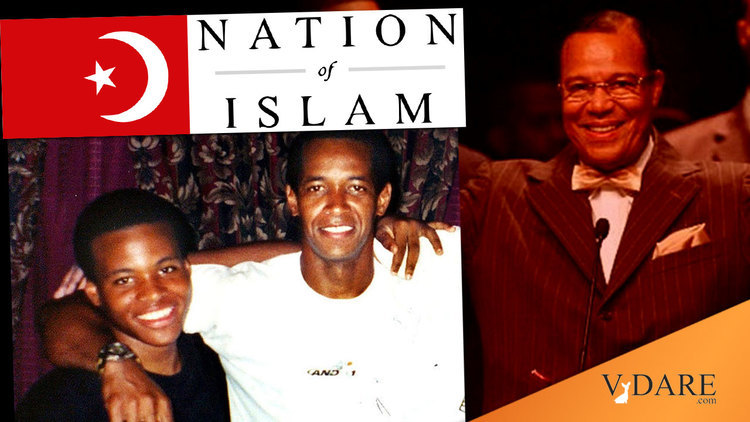
The Lesson Of Lee Malvo’s Fingerprint
11/26/2002
If Montgomery County, Md., police chief Charles Moose had been police chief in Bellingham, Wash., sniper suspects Lee Malvo and John Mohammed would probably still be on the loose today.
That’s because Chief Moose is a vocal opponent of encouraging local law enforcement officers to cooperate with federal immigration agents in cracking down on illegal aliens. "This is the wrong thing to do," Moose declared in May. Moose’s remarks appeared in a Montgomery County, Md., community news article entitled: "Helping INS hurts policing." Attacking a Justice Department proposal to allow local jurisdictions to arrest people for immigration violations, Moose said: "It is totally inappropriate to go down that path."
But it was this "inappropriate" path of cooperation between Bellingham, Wash., police detective Al Jensen and Border Patrol agents Keith Olson and Raymond Ruiz that secured Malvo’s fingerprints nearly a year ago.
On Dec. 19, 2001, Jensen called the Border Patrol for assistance during a domestic dispute involving Malvo, his mother, and Mohammed. The detective suspected that Malvo and his mother were illegal aliens; Olson and Ruiz confirmed their unlawful status and processed them as deportable aliens. Malvo and his mother were fingerprinted and photographed (and later released pending deportation proceedings against the recommendation of the Border Patrol).
As we all know now, Malvo’s prints, taken by the Border Patrol, were critical in unraveling the sniper case.
There is an untold lesson here about the importance of cooperation between local police and the INS. Police officers are sworn to uphold the law and to enforce it when they have reason to believe that the law is being broken. Just because immigration law enforcement is not their primary responsibility does not mean that they must or should ignore indications that these federal laws are being broken. The collaboration is especially necessary in a post-September 11 era when the INS’s interior enforcement forces remain woefully understaffed.
Neither Det. Jensen nor the Border Patrol agents could have foreseen the havoc Malvo is accused of having wrought. But in the course of doing their jobs together, they may have saved untold lives.
Unfortunately, politically correct police officials continue to reject the connection between fighting rampant illegal immigration and protecting national security. Chief Moose is not alone:
Sgt. John Pasquariello, Los Angeles Police Department: "Because of our immigrant population here and our diverse communities, we don’t want to alienate anybody, or give anybody fear."
Sgt. Roland Lee, spokesman, Philadelphia Police Department: "We've got enough to do as it is already without getting involved in immigration….When we investigate crimes, we don’t ask people if they are an illegal immigrant….Once you start asking those questions, people will be scared to death to call police for fear of being deported."
Michael Collins, spokesman, New York Police Department: "The most important thing is that people should not be afraid to come to us for help."
Gil Kerlikowske, Seattle Police Chief:
"The best prevention against a future terrorist attack is a police department that has the trust and good communication with all of the people that it serves, and something that is going to chill that relationship doesn’t help any of us."
Gerry Whitman, Chief, Denver Police Department: "Communication is big in inner-city neighborhoods and the underpinning of that is trust. If a victim thinks they're going to be a suspect (in an immigration violation), they're not going to call us, and that’s just going to separate us even further."
Lt. Armando Mayoya, San Joaquin County, Calif., Sheriff’s Office: "If police officers start reporting to the INS, more undocumented workers could wind up as victims. Criminals soon would realize that undocumented workers would be unlikely to call police for fear of being deported and target them for attacks. Racial profiling also could intensify … "
Sgt. Robert Francaviglia, Hillsdale, New Jersey, Police Department: "We've been trying to get the immigrants in our town to believe that we're not like many of the governments in their old countries, governments that were corrupt and wanted to railroad them, not serve them."
Some cities have actually incorporated illegal alien-friendly policies formally. Los Angeles led the way by declaring itself an official sanctuary for illegal aliens in 1979, when the city police commission issued an order at the city council’s behest barring cooperation between local cops and the INS. Special Order 40 also forbids police from questioning anyone about immigration status until after criminal charges have been made. Chicago, San Francisco, Houston, and New York City all adopted similar policies — and cling to them today.
How many more lives would have been lost if Bellingham had followed their course?
Michelle Malkin is author of Invasion: How America Still Welcomes Terrorists, Criminals, and Other Foreign Menaces to Our Shores. Click here for Peter Brimelow’s review. Click here for Michelle Malkin’s website.
COPYRIGHT 2002 CREATORS SYNDICATE, INC.
